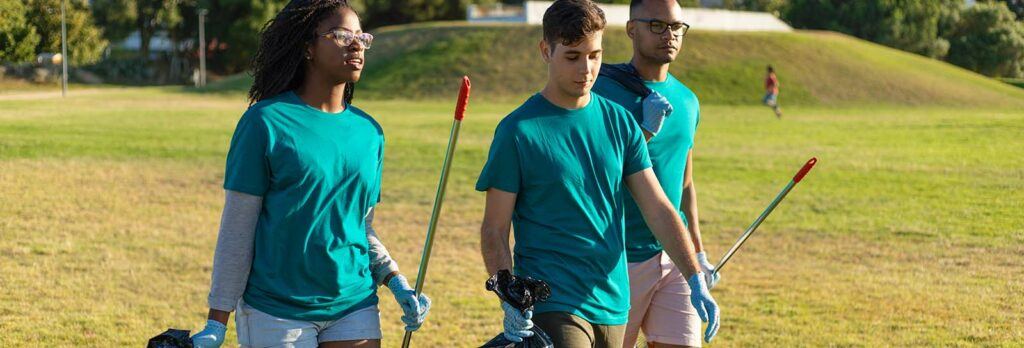By Anthony Molano
There is no single or simple answer to stop the water pollution crisis, however, there are many solutions to prevent water pollution both in our daily lives and within industries.
What Is Water Pollution?
Before we start listing solutions to the water crisis, we need to understand what it is. Water pollution is defined as the contamination of any water body, this includes lakes, oceans, and groundwater. We are all well aware of the water pollution issues as a result of media coverage, especially since we continue to pollute our environment with harmful chemicals that end up in our waters. As our global population grows, so does the demand for water, and as a result, we are seeing an increase in waterborne diseases as our waters become polluted. When water becomes contaminated, it has a negative impact on animals, plants, and the sensitive environment. As a result of climate change and global warming, our precious planet is on the verge of a water crisis.
What Causes Water Pollution?
To find solutions to the water contamination problem, we must first understand what causes it. Water pollution can be caused by anything from overdevelopment to improper sewage disposal.
Water pollution comes from one or a combination of the following activities:
● Urban development
● Sewage & Wastewater
● Mining
● Marine dumping
● Oil leakages
● Burning fossil fuels
● Agriculture: Chemical fertilizers & pesticides
● Global warming
● Radioactive waste
We can separate the solutions to the water issue into 10 groups:
- Wastewater Treatment
- Reducing Plastic Waste
- Water Conservation
- Water-efficient Toilets
- Septic Tanks
- Do Not Use the Toilet as a Trash Bin
- Stormwater Management
- Green Agriculture & Wetlands
- Denitrification
- Ozone Wastewater Treatment
1. Wastewater Treatment
Treating water before it enters the waterway system is probably the most efficient way of reducing water pollution – hitting the issue right at the source!
Wastewater treatment facilities have the technology and tools to remove most pollutants through biological, physical, and chemical processes. For example, sewage treatments allow water to travel through different sanitization chambers to reduce toxic levels of water pollutants and prevent leakages into water systems.
To ensure that wastewater treatments function properly, regular maintenance of equipment is required. This includes applications such as water treatment sensors, which are vital to measure and remove contaminants to reduce water pollution.
2. Reducing Plastic Waste
Plastic waste is a huge issue. More than 8 tonnes of plastic enters our ocean every year, plus the plastic is to outweigh the number of fish by 2050. Plastic waste also decays water supplies. This is why it is extremely important to reduce plastic waste and improve sustainability both locally and globally.
Plastic bottles and bags get most of the media coverage, but plastics are entering water systems in ways you cannot always see, and are most likely not aware of.
Microplastics are a major issue and are found in:
- Industrial manufacturing
- Synthetic textiles
- Clothing
- Personal care products (toothpaste, shampoo, etc.)
To reduce plastic waste at home, we can do the following:
- Recycle plastics
- Use alternatives to plastic like reusable utensils, grocery bags, etc.
- Shop locally and buy fruit & vegetables not wrapped in plastic
- Buy organic/natural & environmentally-friendly care products
3. Water Conservation
Do you turn the tap off when brushing your teeth, or between shampooing your hair in the shower?
Water is a scarce resource, so limiting the amount of water you use daily will contribute to reducing water pollution.
4. Water-efficient Toilets
Toilets used to use ~3.5 gallons of water per flush, however, the EPA (Environmental Protection Agency) enforced the rule that all toilets must only flush 1.6 gallons of water, per flush.
Most houses are now being built with toilets with 2 buttons, one for a small flush (0.8-1.1 gallons of water), and one for full power (1.6 gallons). Water-efficient toilets are one step in the right direction to conserving water and reducing water pollution.
Having a water-efficient toilet will also save you money!
5. Septic Tanks
Septic tanks are a great way to efficiently treat sewage; separating solids from liquid. Septic tanks degrade solids and allow fluid to flow into drainage systems via biological processes.
Using septic tanks reduces water pollution by removing pollutants already present in the water.
6. Do Not Use the Toilet as a Trash Bin
Your toilet is not a trash bin, it is for human waste only. Avoid flushing wet wipes, diapers, and other things that cross your mind down the toilet – that is what a trash bin is for.
Flushing these items down the toilet can cause sewage lines to become blocked, therefore the sewage system cannot do its job properly. When things get blocked, water cannot be cleaned efficiently in wastewater facilities or a septic tank.
7. Stormwater Management
Another way we can combat water pollution is to manage stormwater where possible. Stormwater flows along the road and other surfaces, which can collect viruses, bacteria, and other harmful pollutants, which then make their way into drains, rivers, and eventually the ocean.
Treatment and management of stormwater vary from reverse osmosis (RO), advanced oxidation, and sand filtration.
8. Green Agriculture & Wetlands
Agriculture is a trillion-dollar industry worldwide, using up to 70% of surface water supplies to meet the demand for livestock production and farming.
As agriculture is such a large industry, it is one of the primary causes of water pollution. When it rains, runoff transports pesticides and fertilizers.
Agriculture can be environmentally friendly, known as green agriculture. Green agriculture involves using pesticides and fertilizers that contain no harmful chemicals. It also includes planting trees and creating wetlands to form buffer zones, which filter runoff and water pollutants.
9. Denitrification
When nitrate levels are high in water, it creates the perfect environment for eutrophication or overfertilization from runoff to occur. This allows algae and phytoplankton in the water to rapidly grow, reducing water quality, and contributing to the water pollution issue.
Denitrification is directly converting nitrates into nitrogen gas. This ecological process prevents nitrate leaching into soils and helps reduce groundwater contamination.
10. Ozone Wastewater Treatment
Although this is also a wastewater treatment, it goes through a different process to regular wastewater systems, which is why it is important to also note.
Ozone wastewater treatment uses an ozone generator to break down water pollutants. Ultraviolet (UV) radiation or an electric discharge field inside the generator converts oxygen into ozone. This process oxidizes bacteria, organic matter, and other water pollutants.
There are also solutions you can personally do to reduce water pollution:
- Report water polluters
- Check what waterway your drain or sump-pump connects to
- Never pour oil, fat, and grease down your drain
- Use phosphate-free laundry detergents and dish cleaner
- Dispose of medical and chemical waste properly – never dump medicines in the toilet or rivers
- Consume more organic foods
- Cut down on how much meat you eat
- Support environmental charities
- Avoid single-use plastics like plastic bottles and plastic grocery bags
- Keep on top of vehicle maintenance to prevent oil leakages
- Cut down on chemicals and use environmentally friendly or organic fertilizers and pesticides
- Plant more trees and plants
- Do a beach clean-up if you live by the coast or remove plastic from rivers near your home
- Finally, the issue of water pollution should always be in the back of your mind during daily activities
10 solutions to Combat Water Pollution. Atlas Scientific. (2021, December 2). Retrieved September 11, 2022, from https://atlas-scientific.com/blog/water-pollution-solutions/







I’ve always been curious about incorporating more organic foods into my diet, and your blog has been a revelation. The tips and recipes are practical and make the journey towards healthier eating enjoyable. Looking forward to exploring more!
Thank you so much for your kind words! Incorporating more organic foods into your diet can be a wonderful step towards healthier living. If you have any specific questions or topics you’d like to see covered, feel free to let me know. Happy eating! ??